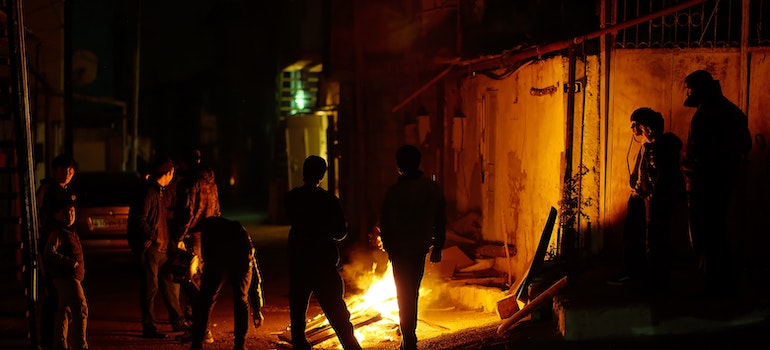When it comes to the impact of addiction on the local Native American population in West Virginia, the issue runs deeper than mere statistics. Here at Harmony Ridge Recovery Center WV, we understand the complex layers contributing to addiction in this community. This article sheds light on how addiction uniquely affects Native Americans in the state, offering data, insights, and paths toward recovery and healing.
Context of Native American Population in West Virginia
Native Americans have a rich, storied history in West Virginia, a connection deeply rooted in the spiritual significance of the land and enduring cultural traditions. The community may be smaller than other ethnic groups, but its social fabric is tightly woven, reverberating every issue, like addiction, through families and generations.
In recent years, substance abuse has become a pressing concern. This problem is affecting individuals and has a ripple effect throughout these tight-knit communities. The rise in addiction rates adds an unwelcome layer of complexity to an already intricate cultural landscape, making it a matter of urgency for Native Americans struggling with addiction.

The Extent of Substance Abuse Issues in WV
The prevalence of addiction among Native Americans in West Virginia is alarming. According to data, this group experiences higher rates of substance abuse than other communities. The state’s opioid crisis is one manifestation of this problem, but it’s not limited to prescription drugs. Alcohol and other substances also contribute to the grim landscape:
- West Virginia has one of the highest opioid overdose rates in the nation.
- Elevated levels of alcohol abuse have also been recorded.
- Methamphetamines and cocaine also cross into these communities.
Various contributing factors make this situation even more complex. Socioeconomic conditions, limited access to healthcare, and past traumas all play a role. It’s a complicated issue that drug rehab centers in WV are working tirelessly to address. They are battling this multi-substance crisis by offering a range of treatments, from detoxification to long-term recovery plans. However, these centers are often stretched thin, struggling to meet the demand. The need for more specialized, culturally sensitive treatment is apparent, yet resources are scarce.
Social and economic factors further complicate the situation. Employment difficulties, educational barriers, and lack of access to health care add complexity to an already challenging landscape. Tackling addiction among Native Americans in West Virginia isn’t just about medical treatment; it’s about addressing a web of interconnected issues that feed into the crisis.
Physical and Mental Health Impact of Addiction on the Local Native American Population in West Virginia
Living with addiction doesn’t just take a toll on the body; it also has severe implications for mental health. Physical health deteriorates, weakening the immune system and making one more susceptible to illnesses. From liver damage due to alcohol abuse to respiratory issues from smoking, the complications are numerous:
- Liver Damage: Common in cases of long-term alcohol abuse.
- Respiratory Issues: Often seen with smoking or inhalant abuse.
- Weakened Immune System: A general consequence of various forms of substance abuse.

Mental health impacts are equally grim. Anxiety, depression, and other mental health conditions often go hand-in-hand with addiction. It creates a vicious cycle that’s hard to break. It’s a difficult reality, but it’s one that addiction treatment in West Virginia is equipped to handle, offering a range of services to address both the physical and mental aspects of recovery.
Barriers to Treatment and Recovery
For Native Americans in West Virginia struggling with addiction, the path to recovery is laden with obstacles. Limited resources make it challenging to take the first step toward getting help. This isn’t merely about financial constraints; it’s also about the geographical availability of competent care. For instance, alcohol rehab centers in WV are few and far between, making it hard for those battling alcohol addiction to find targeted support nearby.
Stigma and shame, deeply ingrained in many communities, deter individuals from seeking treatment. Overcoming these barriers isn’t simple but is crucial for long-term recovery. Some residential treatment facilities in WA offer some respite, yet the demand often exceeds what’s available. To truly combat addiction, we must focus on dismantling these barriers. Community-based initiatives can play a significant role here, offering localized solutions that are culturally sensitive and practically viable. Breaking down barriers will make treatment more accessible and more effective for everyone involved.
Community Support and Resilience
Despite the challenges, there’s a powerful spirit of resilience within the Native American communities of West Virginia. Local initiatives are becoming more common, and tribal councils are taking action to address addiction at the root. Community leaders and elders offer wisdom and guidance, helping create a supportive environment for those looking to break free from addiction. It isn’t just a solitary struggle; it’s a collective effort aimed at rebuilding and healing.

Partnerships with external organizations also offer hope. Places like Harmony Ridge Recovery Center are collaborating with community leaders to provide culturally sensitive and effective treatment programs. These partnerships are crucial because they bring additional resources and specialized knowledge tailored to the Native American community. The belief is strong: with the right support and help, overcoming the grip of addiction is not just a hope but a reachable reality.
Pathways to Resilience: Ending the Cycle of Addiction in West Virginia’s Native American Communities
The impact of addiction on the local Native American population in West Virginia is multifaceted, affecting physical health, mental well-being, and even the cultural integrity of these communities. But amidst the hardships, there are glimmers of hope. Community efforts and external support from facilities like Harmony Ridge Recovery Center are making strides in combating this crisis. Contact us to join this fight. The path to recovery may be fraught with challenges, but it’s a path that can be traversed with the right help and a community that cares.



